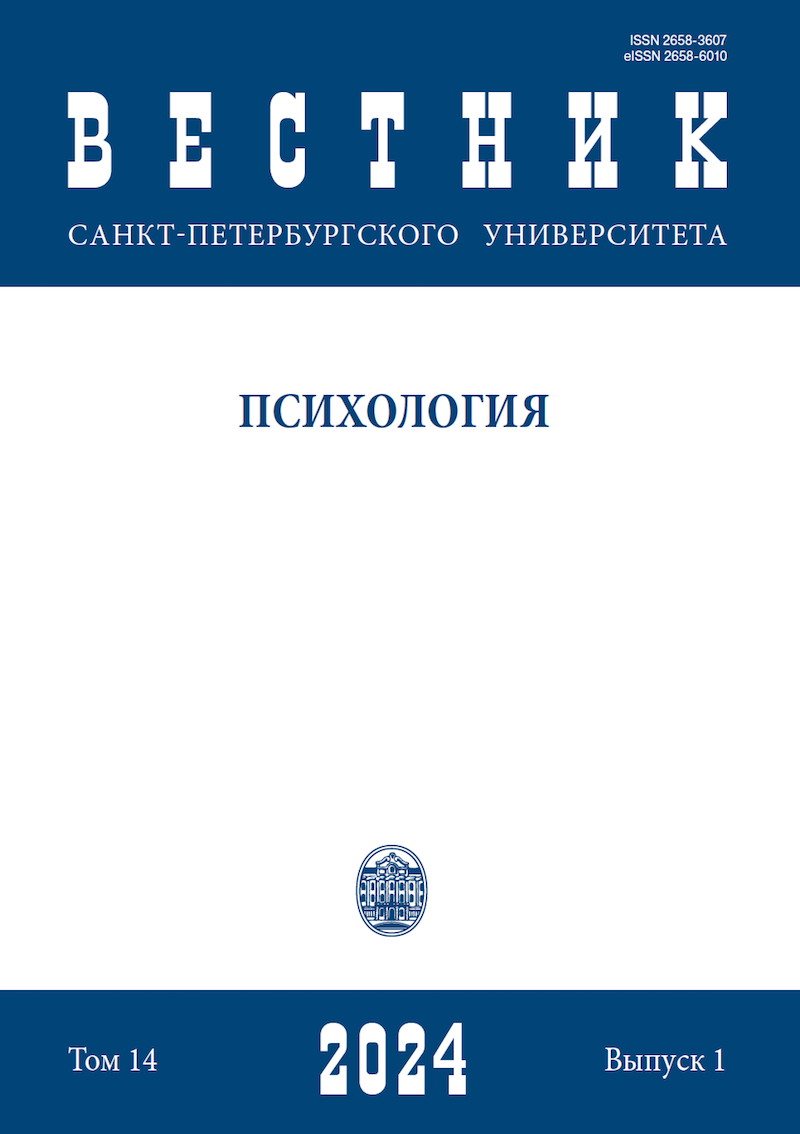Sex and age factors of mental development of children born to mothers with epilepsy
DOI:
https://doi.org/10.21638/spbu16.2024.102Abstract
Mother’s epilepsy is a risk factor for the neurocognitive development of the child, since it belongs to a group of chronic diseases and constant medication, even during pregnancy, is a Author for correspondence. 46 Вестник СПбГУ. Психология. 2024. Т. 14. Вып. 1 vital for patients with epilepsy. It carries various risks, which include intrauterine growth restrictions, congenital malformations, negative effects on cognitive functions and an increased risk of mental retardation of the child. That is why the bulk of research is focused on the effect of certain antiepileptic drugs on the physical development of the child. However, researchers rarely carry out comprehensive assessment of the influence of prenatal, perinatal and age-related factors of the child’s development, and this area remains unstudied. This article presents the results of a study of sex and age factors of mental development and adaptation of children born to mothers with epilepsy. The study involved 176 people: 88 children aged from 3 to 9 years and their mothers suffering from epilepsy. As a result, it was found that the male fetus was more vulnerable to prenatal influences: boys had more pronounced disorders of mental development (motor awkwardness, hyperactivity, attention deficit, oral speech disorders) and adaptation (socialization disorders, emotional-volitional disorders, aggressiveness and oppositional reactions, behavior problems). Some of disorders of mental development (delay in the development of speech, praxis and logical thinking) were compensated with child’s age and secondary disorders — adaptation problems (socialization disorders, somatic and internalization problems, isolation and anxiety) became more significant. Disorders of mental development in children are caused not only by the toxic effects of medication taken by the mother, but also depend on the form and severity of mother’s epilepsy before and during pregnancy, her concomitant diseases, as well as the type of feeding of the child in the first year of life.
Keywords:
epilepsy, neuropsychological diagnostics, sexual dimorphism, preschoolers, primary school students
Downloads
References
References
Downloads
Published
How to Cite
Issue
Section
License
Articles of "Vestnik of Saint Petersburg University. Psychology" are open access distributed under the terms of the License Agreement with Saint Petersburg State University, which permits to the authors unrestricted distribution and self-archiving free of charge.




